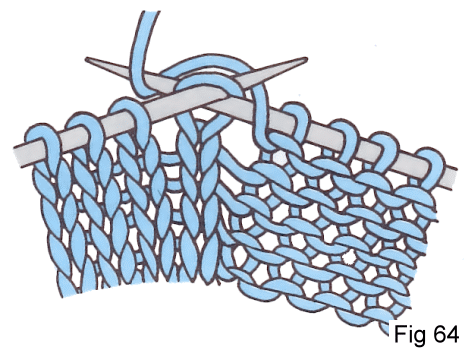Lace knitting & Eyelet stitches
Lace patterns are all produced on the same basic principle. A hole or eyelet is made by winding the yarn round a needle. This makes an extra stitch, which is purled or sometimes knitted on the next row. To retain the correct number of stitches, each eyelet has to be compensated for by a decrease of some sort, such as k2tog, p2tog or sl 1, k1, psso. These decreases can be worked immediately next to the eyelet or a few stitches away depending on the design.
There are three ways of making an eyelet, each differing slightly depending on whether the stitch before and after is a knit or purl. The important thing however is the same for each method - the yarn is taken round the needle to create an extra stitch that is knitted or purled on the following row.
Yarn forward (yf) is worked between 2 knit stitches. This is the same as described under ‘increasing’.
Yarn round needle (yrn) is worked between a knit stitch and a following purl stitch (or between two purl stitches) and this too is described under ‘increasing’.
Yarn over needle (yon) is worked between a purl stitch and a following knit stitch (Fig.64), as follows: Purl a stitch and instead of taking the yarn to the back of the knitting as usual ready to knit the next stitch, take it over the needle as in the diagram, and knit the next stitch.

Keeping lace patterns correct
Most lace patterns rely on the fact that for every ‘yf’, ‘yrn’ or ‘yon’ which produces an eyelet and makes an extra stitch, there is always a decrease to compensate. When shaping, regard these as pairs of stitches and don’t make the eyelet unless you have enough stitches to work the balancing decrease. If this is not possible, work the odd stitches in the main background pattern - for example stocking stitch. Some lace patterns are more complicated and the ‘made’ stitches are not decreased until later rows. For these great care is required in following the instructions and this type of pattern is not recommended for a beginner.
All content generously provided by TB Ramsden & Co.